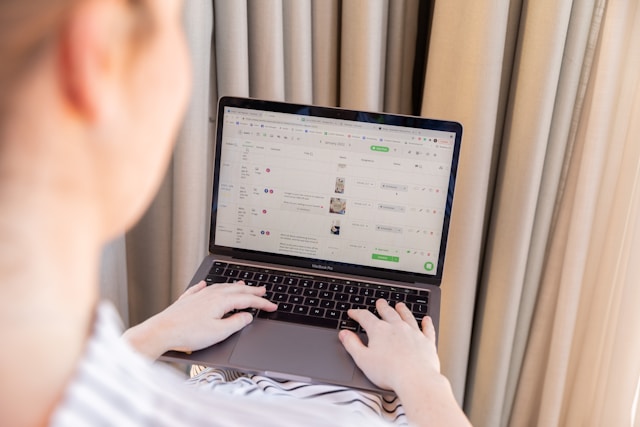Honestly, when your business pops up at the top of Google, it’s like Google’s handing you free advertising on a silver platter. You need customers to survive. You want to grow? You have to get the word out. Back in the day, you had to mess with flyers, brochures, sticking ads in the local paper—old school stuff. Now? A whole different ballgame.
Whether your wallet’s stacked or you’re counting pennies, there are many ways your business can get noticed.
How to Advertise Your Small Business Online (Without Breaking the Bank)
1. Set Up and Claim Your Google Business Profile
Create a Google Business Profile (it used to be called your Google listing—same difference). This makes your business show up on Google Maps, in those local search sections, and even in that fancy box on the side when someone googles your biz name.
Free exposure, people! And Google’s getting scary good at serving up local results, so this isn’t something to sleep on.
You have to claim your listing, though. Prove you own your business, then jazz up your profile with details, photos, all that good stuff, so you actually show up where it counts.
2. Get Yourself a Website
Customers (and even potential ones) are gonna look for it, whether they find you on Google, through social media, whatever. Your website is working for you, 24/7, even when you’re binge-watching Netflix or sleeping. No excuses—get one up.

First off, it’s not just a fancy digital business card. Sure, it tells people who you are, what you’re selling, and how to reach you but it’s also your home base for everything else you do to get the word out. It’s where your brand’s personality shines, where you show off your weird quirks or that snazzy logo you paid too much for, and where all your marketing efforts should point to.
A website is your best promo weapon. You want to run ads? You need landing pages. Posting cool stuff on Instagram? Link it back to your site, obviously. And once you’ve got all your marketing stuff feeding into your site, you can actually see what’s working and what’s just eating up your budget—thanks to analytics.
Now, if you actually want to look professional (and not like you’re running a garage sale out of your mom’s basement), you’re probably gonna have to cough up some cash for a proper website.
3. SEO
Let’s talk about SEO. Getting your business out there is one thing, but getting on Google’s good side? A whole different ballgame. SEO isn’t just a bunch of nerdy tricks—it’s about making your site easy to find for real people searching for what you’ve got.
Google’s gotten smart; it cares about what people actually want, so if your site helps answer their questions, you’re golden. And yes, you can totally snag a spot on page one alongside the big dogs, even if your budget isn’t exactly Fortune 500.
Need ideas? Try stuff like:
– How-to guides (because everyone loves a shortcut)
– Top 5/10 resource lists (people love lists, it’s science)
– Q&As with industry pros (instant credibility)
– Thought pieces (get deep, or just rant a little)
– Guest posts (let someone else do the work for a change)
– Case studies or customer shout-outs (social proof, baby)
– Seasonal updates (because, why not?)
If you’re lost on what keywords to use, there are free tools out there—WordStream’s got one, for example. And there are a million guides on writing SEO blog content, so no excuses.
4. Use Google Ads
Got some cash to burn and zero patience? Fire up a campaign and boom, your business pops up right at the top, above the local folks and those organic results everyone’s hustling for. Google basically owns search traffic, so you might as well ride that wave.
Honestly, Google Ads is like the Swiss Army knife of online advertising. You can tinker with everything—text ads, banners, creepy-good targeting, and analytics that’ll make your head spin. Sure, it’s a bit of a learning curve.
5. Stretch Your Budget with Micro-Audiences
Here’s the thing about social ads: you don’t need to shell out a fortune to see results. Platforms like Instagram let you go pro with targeting. Forget spraying cash everywhere—focus on micro-audiences. Your ads hit the folks who actually care.
Some hacks? Upload your email list and hit up just those people—perfect for getting old customers back with a sweet deal or hyping up a new product. Want to swipe some customers from the competition? Target the fans of your rival brands. Seriously, a cake shop could target people who follow Cake Boss or Dairy Queen. Sneaky, right?
Or maybe you want to get super specific—only target folks in a certain age bracket, or just those living a few miles from your store. Even if you’re all online, you can still pick your spots.
Pro tip: Use those budget scheduling tools to boost your spend when things get busy, and cut back when it’s slow. Don’t forget to use those audience exclusion tricks too, so you’re not wasting cash on people who’ll never buy.
Start small, like $10 a day, then ramp up once you see what’s actually working. No sense in lighting money on fire.
5. Apply for Business Awards
Have you ever looked at newspaper ad prices and just laughed? There’s always some “Best of” thing happening. Someone has to win right? Why not you? It’s way cheaper, and you get bragging rights plus a shiny badge for your website or window.
6. Use Connectively to pitch
So, Connectively’s basically this online hub where journalists, PR folks, and experts all hang out. Think of it like LinkedIn, but way less boring and actually useful if you want to get your name in the press.
If you run a business, you can jump in when reporters are hunting for people to quote—like, someone might be writing about holiday shopping tips or cool summer camps. You toss them your two cents, and if it fits, boom, you get featured.
Sometimes you even score a backlink, which is internet gold. It’s honestly a no-brainer for snagging some free PR and making yourself look legit in your industry.

7. Use direct mail
It actually feels more personal than yet another email you’ll never open. Want to get people’s attention? Send something real to their mailbox.
Just don’t blast everyone with the same thing. Break your audience into chunks. Like, when I moved, I got this welcome packet with deals on blinds and windows, all tailored to my “new homeowner” status. Clearly, they did their homework. Honestly, those hyper-targeted mailers work, especially now when everything’s about personalization.
Frequently Asked Questions
- How to run a Nigerian small business advertising?
If you’re running a business in Nigeria, you have to think local—seriously. Here’s what works:
- Social media is your best friend. TikTok, Facebook, Insta, WhatsApp Status—they’re cheap and actually get results.
- Local radio and newspapers? Still a solid bet, especially in smaller towns where everyone knows everyone.
- Micro-influencers: People trust recommendations from folks they actually follow, not just random celebs.
- Bulk SMS: Dirt cheap, gets people’s attention fast.
- Don’t sleep on online marketplaces—Facebook Marketplace, Konga, Jumia. That’s where your customers are scrolling.
There you go. Real talk, real tips.
- How to advertise your small business online
Here’s a simple plan:
- Pick the right platforms — Focus where your customers hang out (Instagram, WhatsApp, Facebook, Google Search).
- Create simple, clear ads — Use eye-catching images, clear offers, and strong calls-to-action (e.g., “Order Now,” “Call Today”).
- Set a budget and test — Start small, see what works, then scale.
- Track results — Use tools like Meta Ads Manager or Google Analytics to see what’s bringing customers.
- Be consistent — The more often people see your brand, the more they’ll remember it.